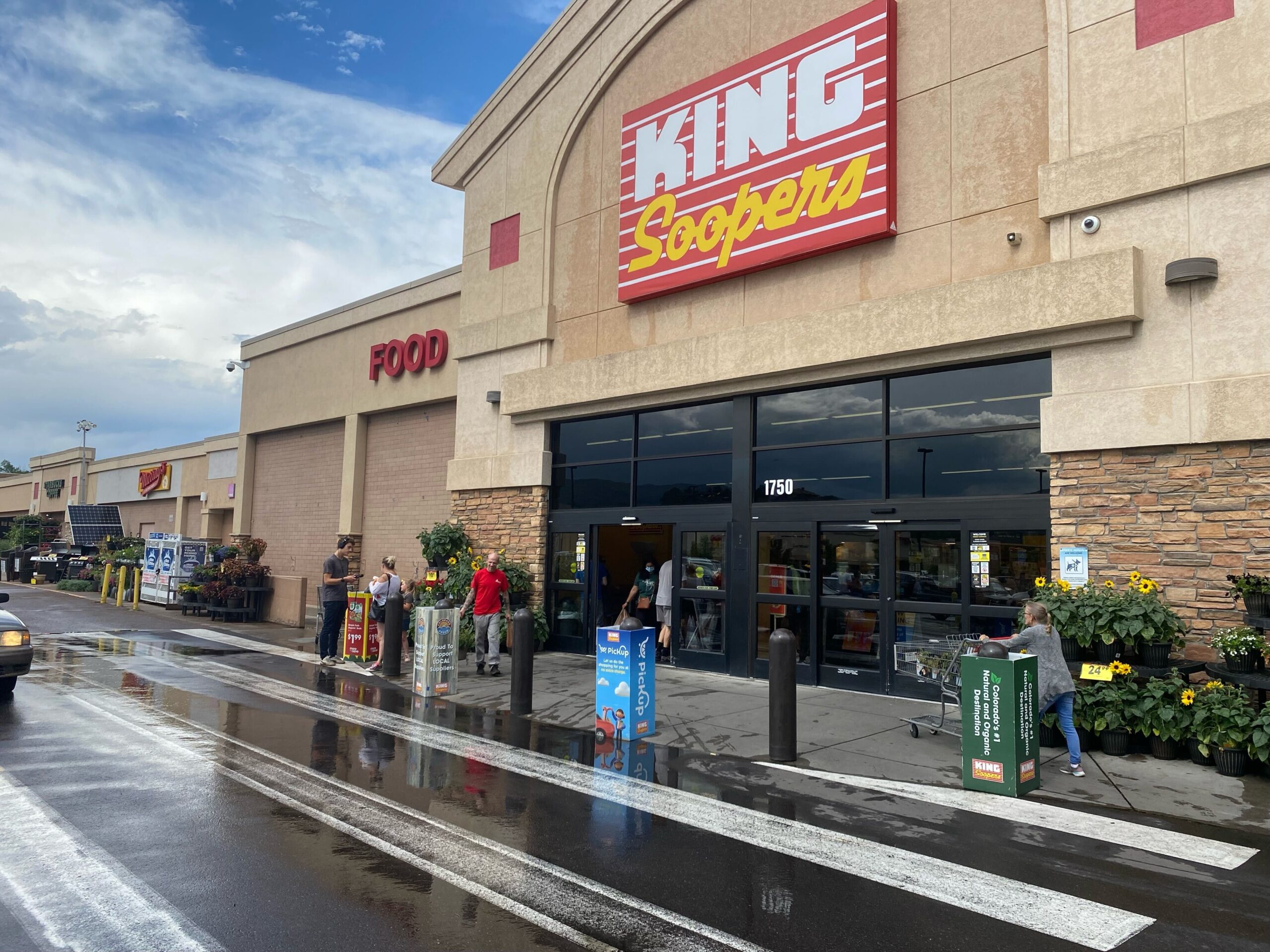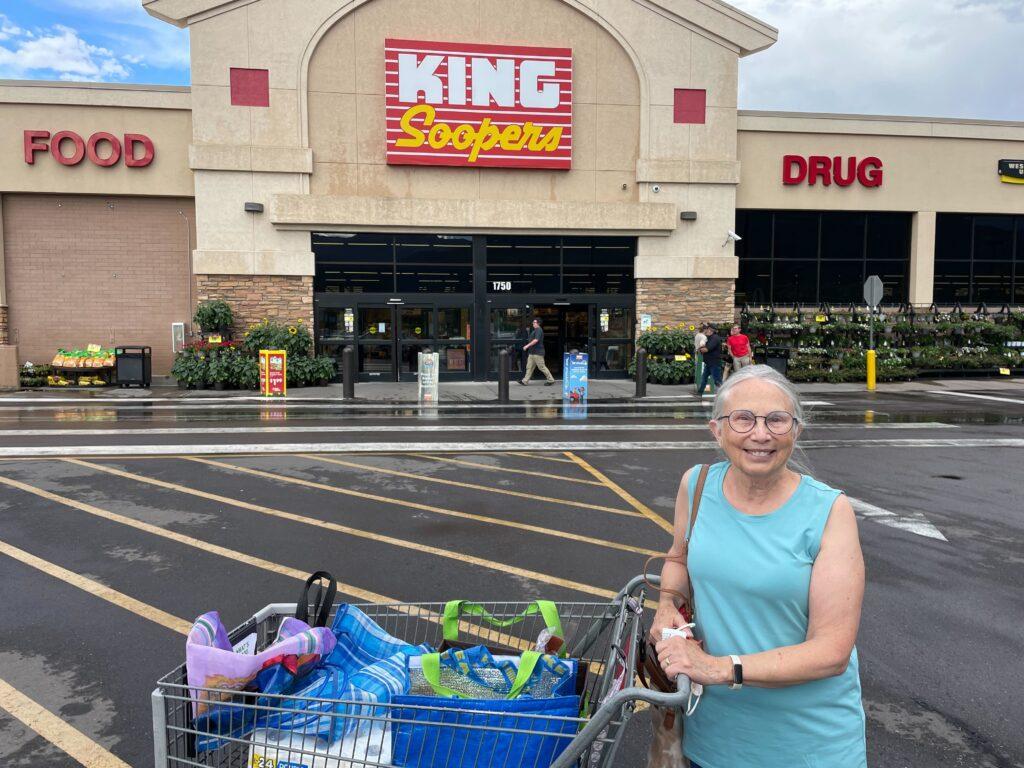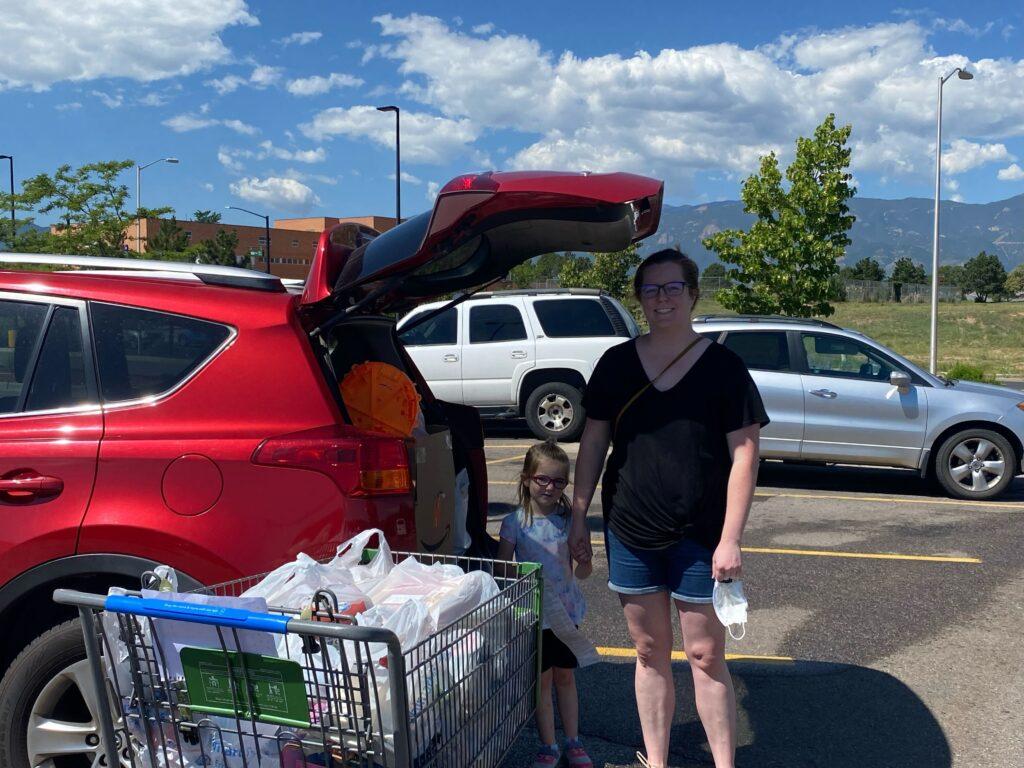
Inflation is being felt everywhere. But for many, its bite is sharpest at the grocery store.
Rising prices on food have forced shoppers to cut back, substitute, or even completely forgo certain items.
“I don’t buy gallons of milk anymore,” said Julie Alvarado, 57, who was doing her weekly grocery trip at a Walmart in Thornton. Since January 2020, the price of a gallon of milk has risen by 24 percent.
Alvarado and her husband raised five children who are now all out of the house, a change she thought would make budgeting easier. But when the pandemic hit she had to stop working after she got COVID. Even though Alvarado’s husband makes decent money, they’ve found the rising price of their weekly grocery bill difficult to manage.
With fresh milk off her shopping list, Alvarado has had to resort to alternatives. “I try to get by. I hate to say this but … (I) put powdered milk inside and kind of water it and make it go farther.” She’s also started watering down her orange juice to make it last longer.
Alvarado’s best friend Kathy Grant, 57, said her go-to meal is chicken and Coca-cola. “I’m willing to cut out other things,” she said, in order to keep her two favorite items on her weekly dinner menu.
One food staple that has seen a massive price increase is eggs. The price of a carton of eggs has risen 38 percent since January 2020, one of the most notable increases in the grocery store. It’s a spike the women have definitely noticed. “(I’m) down from two eggs to an egg,” Alvarado said.
Making ends meet on a tight budget is proving challenging for many with rising inflation. “The food’s kinda hard, I’m on food stamps now,” said Brianna Early, 21, who was shopping with her two young children at a Lakewood Walmart.
Desiree Vigil, 44, said she’s been noticing inflation everywhere and decided to cut down her expenses by “not buying fast food anymore.” She’s far from alone in trying to cut out discretionary spending.
“The increasing levels of food and fuel inflation are affecting how customers spend,” said Walmart CEO Doug McMillon in a press release last month. Walmart lowered its revenue and profit expectations for the year due to concerns over inflation and consumer spending.
Changing how and where to shop
With inflation hitting a 40-year high this summer, Coloradans across the state have had to change how they shop. For some in Southern Colorado, higher prices mean adjusting not just what food they buy, but where they buy it.
Leaving a King Soopers in Colorado Springs recently, Mark Howard said he won’t be shopping there anymore. Howard thinks King Soopers has gotten too expensive and he'd rather go to Walmart, where he said prices are lower.
The dollar store and the arc Thrift Stores have also become more regular stops for him.
“I love the dollar store, I go there constantly,” he said. “Just for little stuff like bread because it’s 99 cents, but at [King Soopers] it’s $1.29.”
Howard is part of a trend of shoppers turning to discount stores recently. The Wall Street Journal reported that spending on grocery products at discount chains was up 71 percent between October 2021 and June 2022. Over that period, spending on the same products at grocery stores was down 5 percent.

In recent conversations with more than a hundred Colorado voters about what they want candidates to focus on in the upcoming election, inflation and the economy came out as clear concerns, with about a third of people listing them among their top issues. Those findings echo national polling that found a wide majority of people believe inflation is the top problem facing the country.
Ronny Honzell, another shopper at King Soopers that afternoon, said higher prices mean she’s been hitting food banks to fill in the gaps.
She was shopping for her daughter and her mother, who is diabetic. Honzell said it has been especially challenging to get fresh food for her family. To make due, she said she’s opting for more canned food than fresh.
Care and Share, a non-profit food bank that serves 31 southern Colorado counties, has seen more traffic recently, according to President and CEO Nate Springer. He said there’s been a 15 to 20 percent increase in people coming to their 273 food pantries in the last few months.
“(There’s a) new group of people that have crossed a threshold they’ve never crossed before, based on the increase in gas and utilities and food costs that we’ve seen,” said Springer. “There’s a new group of people out there that need our help.”
Canceled Trips and Acceptance
Just getting to the grocery store — or the food pantry — is costing people more right now. Over the past year, the average price per gallon of gas in Colorado has increased by over a dollar. Compared to this time two years ago, it has nearly doubled.
It may be cold comfort to Colorado drivers, but the Rocky Mountain region has actually seen a smaller increase in price compared to other parts of the country. Californians have it the worst, paying on average more than five and a half dollars per gallon.
Renee Lacey said she recently canceled a planned trip due to the price of gas, and her neighbors have just stopped driving altogether.
“They’re biking everywhere now,” she said. “They struggle more. They’re on bikes now.”
Even though gas prices are higher than they were a year ago, they have recently begun to decline. In Colorado, the average price per gallon is 40 cents cheaper than it was just two weeks ago.

Kathy Dreiling, who runs a catering company, said that fluctuations in prices are just a fact of life. (Full disclosure: Dreiling’s company is catering an upcoming event at KRCC, which our reporter was unaware of at the time of her interview.)
“I kind of wish everyone would calm down a little bit and just realize that it’s sort of a fact of life that things go up and down and we kind of have to expect that and not get too angry about it,” she said.
The future of gas prices is unknown; factors influencing the price at the pump include disruptions from the ongoing COVID-19 pandemic and Russia's war with Ukraine. U.S. and European bans on Russian oil imports have helped drive up gas prices around the globe.
Denise Locke is trying to stay positive, even though she is paying more to fill up her car.
“I try not to complain at the gas pump because I’m like, what good is it going to do me? It’s just going to make me mad for the rest of my day.”









